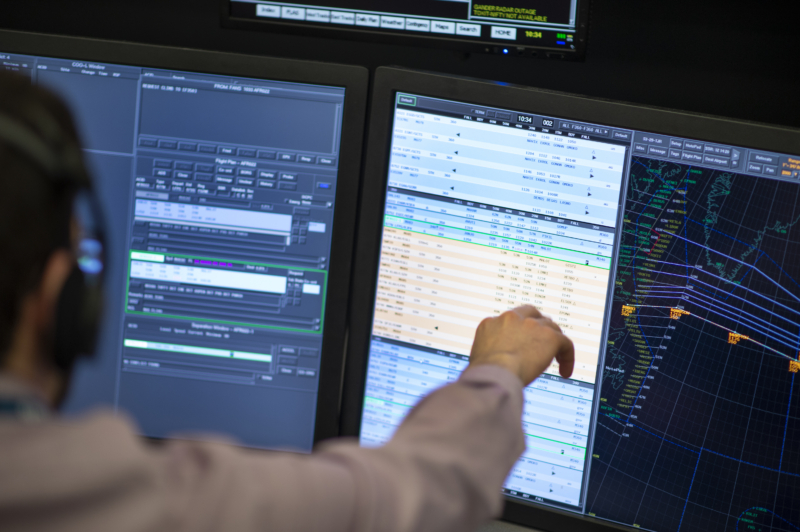Supersonic transatlantic if the Jet Stream blows ferocious?
23 February 2024NATS looks after flights through the North East Atlantic in what’s known as the Shanwick Flight Information Region. It’s the busiest piece of oceanic real estate in the world and as such the strength and location of the Atlantic Jet Stream plays a major part in our lives here at Prestwick Centre.
Its specific location can vary day by day, but essentially the Jet Stream is a very strong current of wind in the stratosphere, blowing across the Atlantic from West to East. When aircraft are flying from Europe to North America, it’s something we try to help airline operators avoid – headwinds slow aircraft down and result in more fuel burn – but when flying eastwards, it’s like hitching a ride on a fast-moving river and can cut journey times by up to an hour.
While that sounds like good news, we do have to be conscious of aircraft actually arriving too early and the excessive airborne holding that can then result. It’s all a bit of a balancing act.
The last couple of weeks have seen a strong Jet Stream and some rapid transatlantic crossings. That’s prompted some people to wonder if those flights have actually been flying faster than the speed of sound and going super-sonic.
It’s an easy assumption to make looking at some of the recorded speeds on paper, but it doesn’t take into account the difference between airspeed and ground speed and how Mach – the ratio of an aircraft’s speed to the speed of sound in air around it – is measured.

It’s not the most straightforward concept to get your head around, but airspeed is all about how fast an aircraft is going in relation to the air around it, whereas ground speed literally measures how fast it is moving along the ground. As a result, an eastbound flight riding the Jet Stream will have a much higher ground speed than airspeed because of the very fast-moving air surrounding it. That’s why none of the aircraft flying West to East have been breaking the sound barrier, despite ground speeds in excess of 800mph.
I always think of it like walking on an airport travellator. You’re walking at the same pace relative to the moving walkway, but still travelling at a much faster rate than other people.
A big part of our job each day is to understand the behaviour of the Jet Stream and how we can use it to offer the best and most efficient routes to the airlines. It’s something that’s become a whole lot easier since we started using Aireon’s real-time Space Based ADS-B surveillance data.

Today, around 73% of aircraft achieve their requested trajectory at the Oceanic Entry point, and 85% of aircraft get their requested flight level or higher in their initial Oceanic Clearance. Compare this to the pre-Space Based ADS-B era, where we were only able to provide 61% of flights with their requested trajectory in their initial clearance, this is a big improvement in the service we can offer, helping to reduce fuel burn and emissions.
Furthermore, we are enhancing daily flexibility by designing a more compact Organised Track Structure (OTS). This smaller footprint allows flights to navigate freely within the airspace around the OTS, without any flight planning restrictions. A smaller OTS will give airlines autonomy to maximise the Jet Stream to turbocharge their ground speed eastbound or avoid those significant headwinds when flying westbound.
So while no one is breaking the sound barrier across the Atlantic, the Jet Stream does play a hugely important part in the oceanic operation.
Comments
Please respect our commenting policy and guidelines when posting on this website.



